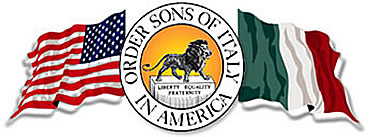Have you been interested in building an ancestral family tree?
Courtesy of Ancestry.com
Explore the world's largest family history website at Ancestry.com. OSIA Lodge and At-Large members can now access the OSIA records collections online at Ancestry.com for free using the special website link listed in the Members Only section. OSIA members also receive 20% off all items in the Ancestry.com Store. Log in to the Members Only Section for more details. If you are not an OSIA member, click here for details on how to become one today.
Finding Your Italian Ancestors by Suzanne Russo Adams (from Ancestry.com)
This handy beginner's guide shows how to tap census data, naturalization records and ships' manifests in the U.S. as well as helps sort through the maze of civil and church records in Italy. Includes English/Italian translations of bureaucratic terms; sample letters in both English and Italian for requesting information and documents and even a short history of Italy and handwriting samples from the 1500's to the 1900's to help in reading original documents. Author Adams closes with pertinent web sites and societies to help with further research.
Courtesy of MyItalianFamily.com
This has become a very popular activity for many Italian Americans. Genealogy is a science, but most of all it's the ability to build our family tree with "exact" information.
How do you access such information if it is maintained in Italy? Archives are different from country to country. In the United States, government agencies allow citizens to order specific historical documents online. In addition, there are catalogs, addresses, and instructions available online that can make research fast and easy. If records in America are somewhat easily attainable, those from Italy require a little bit more effort.
In Italy, there are three main public sources that are repositories of family information:
-
Town Halls (Comuni) started to register the population only after the unification of Italy (about 1866-1873 to today's date).
-
State Archives (Archivi di Stato) maintain the so-called Napoleonic records, mostly available in the south of Italy, covering the period from 1809 (1820 in Sicily) to 1865.
-
Parish churches (Parrocchie) started to record births/marriages/deaths of their parishioners after the Council of Trento at the end of the 1500s.
Assuming that you know the essential information needed to start a research project in Italy (full name, date of birth, town where ancestor was born), you could well contact one of those sources to request names and dates and easily build your family tree. But the reality is rather different.
Only town hall officials and archivists can perform such requests, but they have time constraints; officials and archivists have the obligation to serve residents and visitors first and then if they have any time left to fulfill other requests. Parish priests, on the contrary, have no obligation to perform any of such requests. In addition, they have very little time available since they are busy with their parishioners and traveling from one village to the other. In general, few speak and understand any language other than Italian, but what is worse is that they receive hundreds of requests from all over the world.
How do you become first on the list?
-
Do not send money, except what is needed to cover the expenses to mail the response to a different country. Sending extra money will not get you any further up on the list.
-
Try to request a reasonable amount of information at one time, especially when you are not sure about the names and dates that you are going off of.
-
Try to avoid using online translators or software programs to translate lengthy documents from Italian to English. Be aware that some important facts may get lost in the translation, thus setting you back in your search.
The Church of Latter Day Saints has microfilmed part of these records (namely the Napoleonic Records) and is making them available through its Family History Centers. But these are difficult to understand unless you have extensive experience making sense of Italian records. Often handwritten in Latin or local dialects, old records are a challenge even for native Italians.
How can you be successful with a professional Italian based genealogist?
Using professionals trained in the art of reading and understanding Latin and Italian handwriting and the science of genealogy is essential. An experienced Italian based genealogist will have cultivated working business relationships with many of these officials. In most cases, information is gathered quickly and accurately including official registered birth, marriage, and death certificates. And most of all, the professional Italian genealogist can advise you on a course of investigation as well as when to persevere and when to give up. In many cases a complete and accurate family tree can be completed in several months and treasured for generations.
(The above information is courtesy My Italian Family. For more information on genealogy research, visit www.myitalianfamily.com, email Italians@myitalianfamily.com, or call 888.472.0171. OSIA members should visit OSIA.org's Members Only section to retrieve a promotional code for discounts on My Italian Family services.)
Additional Genealogy Resources:
-
Finding Italian Roots, by John Philip Colletta, Ph.D.; Genealogical Publishing Co., Baltimore, MD (1993); 410-837-8271
-
Italian Genealogical Records, by Trafford Cole, Psy.D.; Ancestry Inc., Salt Lake City, UT (1995); 1-800-531-1790
-
A Student's Guide to Italian Genealogy, by Terra Castiglia Brockman; The Oryx Press, Phoenix, AZ (1996); 1-800-279-6799
-
See our Resources section for a list of organizations and websites.
